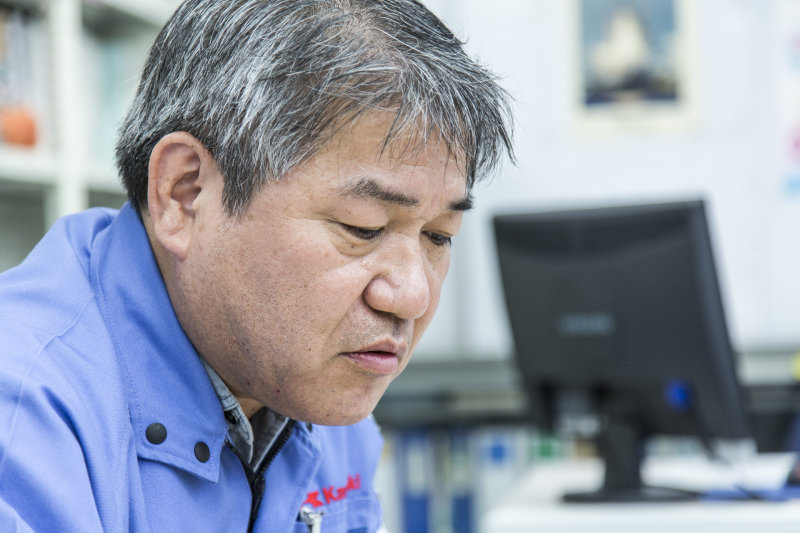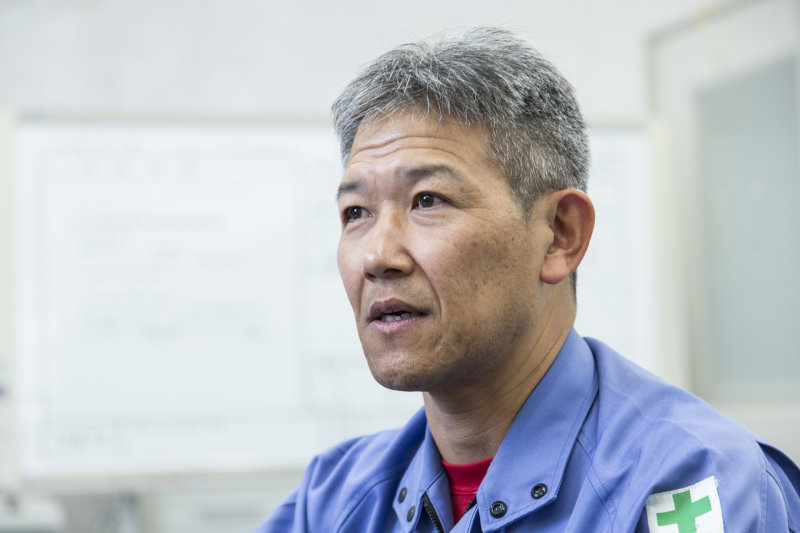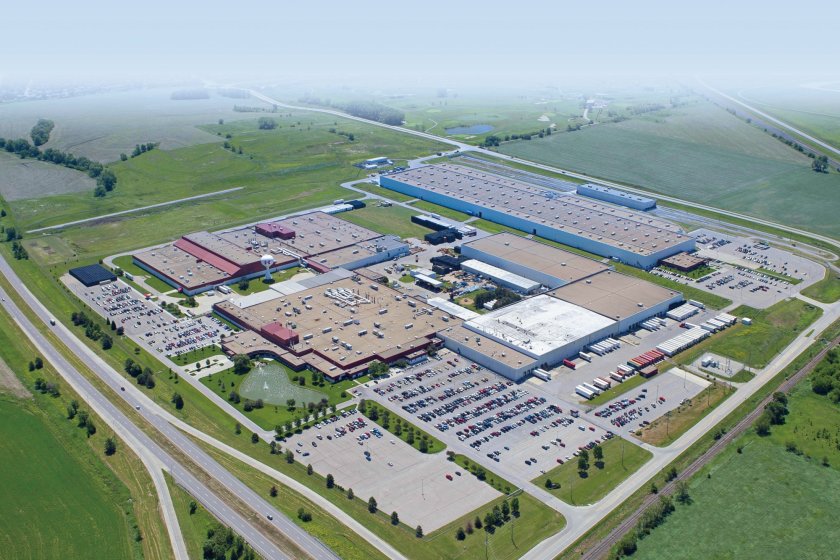The Tanegashima Space Center has the core role in launching satellites for domestic space development, and many of its facilities are supported by the skills and expertise of the comprehensive engineering corporation Kawasaki. Two of the engineers devoted to space projects in Japan talk about the cooperation needed to accomplish advanced technologies.

Section 2, Cryogenic Storage System Department
Cryogenic Storage System Engineering Division
Plant & Infrastructure Company
Kawasaki Heavy Industries, Ltd.
Akio Miyamoto joined Kawasaki Heavy Industries in 1986. After working in a department engaged in the development of hydrogen storage alloys, he was involved in designing passenger bridges for aircraft and ships, and designing aircraft maintenance docks. Subsequently, on a temporary assignment to JAXA (Japan Aerospace Exploration Agency, back then still called National Space Development Agency of Japan [NASDA]), he worked as a facility modification and improvement engineer at the Tsukuba Space Center. From there, he became Site Manager of the Tanegashima Site Office charged with launch operations and maintenance duties.

Section 2, Cryogenic Storage System Department
Cryogenic Storage System Engineering Division
Plant & Infrastructure Company
Kawasaki Heavy Industries, Ltd.
Jun-ichi Sugimoto joined Kawasaki Heavy Industries in 1990.Initially assigned to the Industrial Equipment and Energy Storage System Engineering Department (now the Cryogenic Storage System Department), followed by a post designing spherical storage vessels and flat-bottomed LPG storage tanks, he came to JAXA on a temporary assignment, charged with the development of the launch facility for H-II A rockets. Since fiscal year 2012, he has been involved in launch operations and maintenance duties as Deputy Site Manager of the Tanegashima Site Office.
Shared History: Tanegashima Space Center and Kawasaki Heavy Industries

The relationship between Kawasaki and JAXA started in 1971, that is, 45 years ago, and has continued from the development of the N-I rocket launch facility until now. That was before Mr. Sugimoto and I joined Kawasaki. Our work today builds on the foundation that the previous generation of engineers created.
Since I first got involved in space operations, over ten years have passed. Even at that time, clients knew and deeply trusted Kawasaki as an equipment manufacturer. To this day, we are indebted to the engineers who built those trust relationships back then. With every advance in rocket technology, engineers came here to execute modifications and improvement of equipment/facilities at the Tanegashima Space Center. Even in the design stage, their planning went as far as to consider the ease-of-use of equipment/facilities during operations, and after delivery, they continued coming to ensure careful follow-up on equipment performance.
This kind of close contact between JAXA and Kawasaki over many years has fostered a strong partner relationship, marked by their trust in our technical capabilities and mutually friendly relations. I strongly feel that if even one of these ingredients was missing, operations such as we have today would not have materialized.


Kawasaki is charged not only with operation of the facilities created by Kawasaki, which include the Vehicle Assembly Building (VAB), the Liquid Hydrogen Storage (LHS) facility, the Hydrogen Disposal Facility (HDF), and the High-pressure Gas Booster (HGB), but also with the Liquefied Oxygen Storage (LOS) facilities and the High-pressure Gas Storage (HGS) facilities of other companies.
Moreover, Kawasaki was also in charge of the development and operations of the Osaki Launch Complex, which has now been decommissioned and dismantled. In this sense, Kawasaki has long been in charge of a large portion of the facilities at the Tanegashima Space Center.
Because our commitment here includes post-installation operations, we produce our designs, right from the development stage, with operations and maintenance in mind. It is also the reason why we succeed in providing equipment and facilities held in high regard by our clients.


Technology Achievement at Kawasaki Heavy Industries

As Mr. Sugimoto said already, many facilities manufactured by Kawasaki are still in operation on this site. Each of them is indispensable for rocket launches, even though some are operated only around 15 seconds before the actual take-off. All of them incorporate aspects of Kawasaki’s technology, culminating in the operation of the facilities at Tanegashima Space Center.


For example, owing to its large size, the LHS facility could not be manufactured and then transported here in one piece, meaning that it needed to be assembled on site. On that occasion, we used welding technology originating from the shipbuilding experience of Kawasaki. Then, there are the contrivances deployed all over the tank to reduce heat conveyance into the vessel. Ignoring even a small percentage of heat transfer would worsen the tank’s performance, which would reflect negatively on our overall reputation of our equipment. This is why even the smallest details receive so much attention.


Moreover, we have used the hydraulic technology of our Precision Machinery Company for the machinery powering the world’s largest sliding door, as well as the hoisting lifts at the VAB. Instead of electric motor drives, the VAB uses hydraulic power to protect precision equipment such as satellites from the adverse effects of electromagnetic waves. In this way, all kinds of technologies accumulated at Kawasaki up to that time came together in the facilities of the Space Center.
However, the space business, a cutting-edge field, requires resources other than technical capabilities, making cooperative arrangements across industry borders indispensable. It is here that Japan’s leading manufacturers, such as Mitsubishi Heavy Industries, IHI Aerospace, and Mitsubishi Electric, etc., together have been striving to implement a national endeavor. I consider it most vital that we cooperate with each other and achieve this mission by bringing together the full capabilities of Japanese manufacturers.

Although their companies may differ, being engineers in the space business is their common ground. They may take pride in different things, but they also know that no achievement comes from seeking only their own advantage.
There is no substitute for helping one another and mutually relying on the other’s technical skills.








